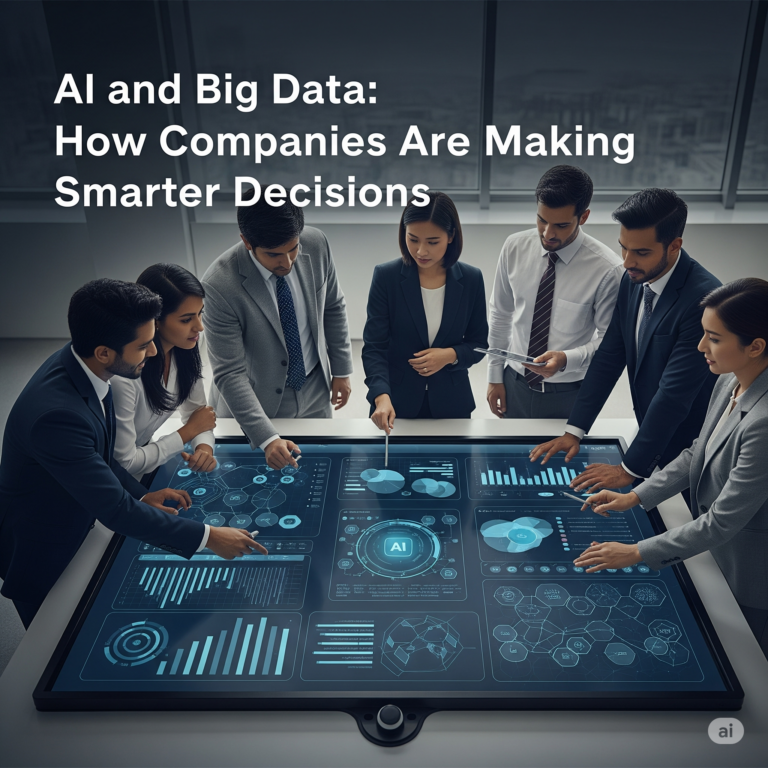AI and Big Data: How Companies Are Making Smarter Decisions
Introduction
In a world flooded with data, companies are no longer asking if they should use it — but how to use it better. The combination of Artificial Intelligence (AI) and Big Data is revolutionizing how businesses operate. From improving customer experience to predicting market trends, these tools are helping organizations make smarter, faster, and more accurate decisions than ever before.
1. What Happens When AI Meets Big Data?
Big Data refers to the massive volume of structured and unstructured data generated every second — from social media posts and website clicks to IoT sensors and customer transactions.
But raw data on its own isn’t useful. That’s where AI comes in. AI algorithms can analyze enormous datasets at lightning speed, spotting patterns, trends, and anomalies that humans might miss. Together, AI and Big Data turn overwhelming information into actionable insights.
Example: A retail chain uses AI to analyze buying behavior across regions and adjusts inventory in real time to match demand.
2. Smarter Decision-Making Across Industries
Retail
- AI and Big Data help forecast demand, personalize recommendations, and optimize pricing.
- Stores analyze foot traffic and weather data to adjust promotions and staffing levels.
Finance
- Banks use AI to detect fraud, assess loan risks, and automate customer service with chatbots.
- Big Data helps predict market trends and investment opportunities.
Healthcare
- Hospitals analyze patient records with AI to spot early signs of diseases.
- Wearables collect health data, which AI turns into preventive care insights.
Manufacturing
- Predictive maintenance prevents machine failures before they happen.
- AI monitors production lines, improving quality control and reducing waste.
3. Real-Time Decisions, Real-World Impact
One of the biggest advantages of combining AI with Big Data is the ability to make decisions in real time. For example, ride-sharing apps like Uber and Lyft use real-time traffic, driver availability, and user demand to calculate prices and match riders instantly.
Companies don’t have to rely on outdated reports anymore. They can adjust strategies on the fly, saving time and money while staying competitive.
4. Challenges Companies Still Face
While the benefits are huge, integrating AI and Big Data isn’t easy. Here are some common hurdles:
- Data privacy concerns: Misuse of personal data can damage trust and break laws like GDPR.
- Data quality issues: AI is only as good as the data it learns from. Inaccurate data leads to bad decisions.
- Skill gaps: Many companies struggle to find data scientists and AI experts.
- High implementation costs: Smaller businesses may find it hard to invest in the necessary infrastructure.
5. What’s Next? The Future of Data-Driven Intelligence
Looking ahead, we can expect even deeper integration of AI into business intelligence. Technologies like automated machine learning (AutoML) and natural language processing (NLP) will make data analysis more accessible to non-experts.
We’ll also see edge AI — processing data right on devices instead of relying on the cloud — enabling faster, more secure decisions in industries like logistics, retail, and smart manufacturing.
Conclusion
AI and Big Data are no longer buzzwords — they are strategic tools driving smarter decisions in today’s business world. Whether it’s predicting customer behavior, improving operations, or creating personalized experiences, companies that embrace these technologies are gaining a clear edge. The message is clear: those who understand and act on their data will lead the future.


